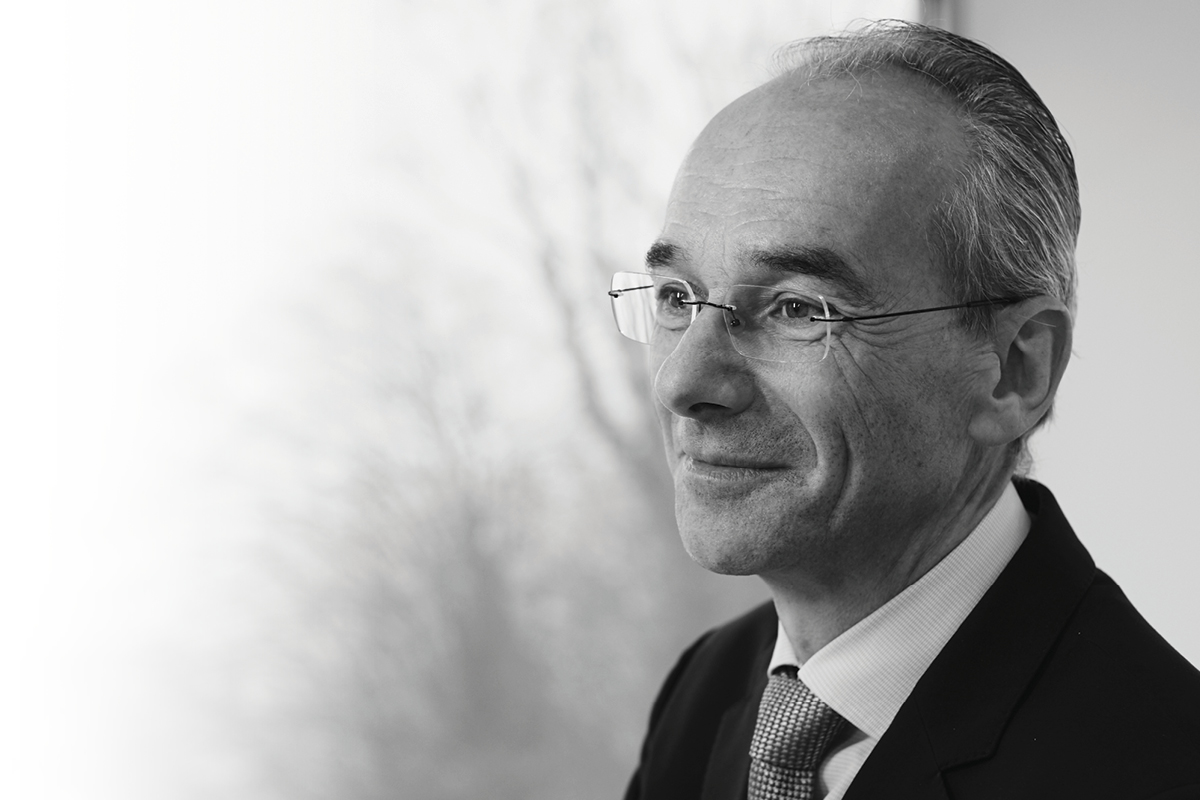As a CEO and savvy businessman, there’s no doubting Thomas Seiler’s impressive pedigree. After all, with u-blox being the third company he has successfully spearheaded, his track record speaks for itself.
It’s when he talks about technology that you realise it’s his genuine passion for the industry that took him to the top, not the lure of prestige or title.

Take this executive out of the boardroom, and he’s full of enthusiasm for a product most consumers would barely notice, let alone care about.
U-blox, headquartered in Thalwil, Switzerland, develops and distributes chips and modules for wireless communication and positioning technology for the automotive, industrial and consumer markets.
As a fabless company outsourcing manufacturing, it invests heavily in R&D, focusing on providing products and solutions for the Internet of Things, serving customers and their many applications around the world.
While many of us would struggle to explain the highly technical role of an integrated circuit, Thomas will not only detail how it works, or why, but also where it will work in the future.
His degree in mechanical engineering at the Swiss Federal Institute of Technology Zurich (ETH) and his MBA from INSEAD in France, has ensured his firm grasp on a relentlessly competitive industry.
Don’t be fooled by the suit – his eyes light up when he joins his technical team to toss around ideas and offer his own creative solutions and forward-thinking.
There’s been a lot of that throughout his career as CEO of first Melcher and then Kistler, before joining u-blox in 2002 as head of sales and marketing.

“I came to u-blox because I wanted to invest in such a company and become a shareholder,” Thomas admits.
“The company has excellent technical capabilities and exceptional business ideas. It was my job to guide it into a growing and stable business.”
“The job, of course, comprised many things,” he adds.
“You have to bring together processes and attitudes and, in the beginning, it was crucial to make sure the market understood what we actually do and how good our products are.”
“I was very focused on establishing our corporate identity and improving communication in the global market.”
“We expanded existing international sales channels in the US, Europe and Asia to ensure we had access to all available markets and customers.”
“Of course, we also had our bigger customers to cater for, and that involved expanding our internal processes and relationships with our manufacturing partners to handle increasing volumes.”
Last year, u-blox celebrated 20 years since being founded as a spin-off from ETH, a triumph Thomas attributes to the company’s culture and spirit.
“I’m very lucky to be still working alongside the founders of this company,” Thomas says.
“Together, we formed the executive team and while I’ve always been pragmatic, we still have the spirit of a start-up.”
“We spread this positive attitude and philosophy in the company and use it to guide our new employees.”
“We spread this positive attitude and philosophy throughout the company and use it to guide our new employees.”
“We also have an excellent reputation and environment for delivering high performance and commitment to our customers,” Thomas adds.
“As we grow the company, we manage to keep things very lean and effective while still being agile enough to develop new and cutting-edge products a little quicker than the competition.”
“We have an excellent reputation and environment for delivering high performance and commitment to our customers.”
Thomas is convinced there is no end to the growth and development of wireless connectivity.
He regards it as an industry making enormous progress, despite some doomsayers predicting the industry has peaked.
However, this is exactly where his technical understanding commands the respect it deserves in industry circles.
“There is almost no end to this progress,” he says.
“The capacity that you can put into integrated circuits to expand computation power or memory size, makes more and more things possible. Before, it was just unfeasible.”
So, what is a semiconductor?
As the name implies, a semiconductor is a material, usually a solid chemical element or compound, which conducts current, but only partly.
Used extensively in electronic circuits, the conductivity of a semiconductor is somewhere between that of an insulator, which has almost no conductivity, and a conductor, which has almost full conductivity.
“This is why the market grows strongly and sometimes triggers extreme demands.”
“Of course, we are profiting from this overall technological evolution and believe we can put a lot more intelligence into products and solutions that were inconceivable before.”
“Naturally, we must make the concept match the customer’s needs, and that involves a lot of extensive and sometimes intense dialogue. “
“We then follow through, try it out, and finally deliver. That’s the only way to produce a successful product to market.”

